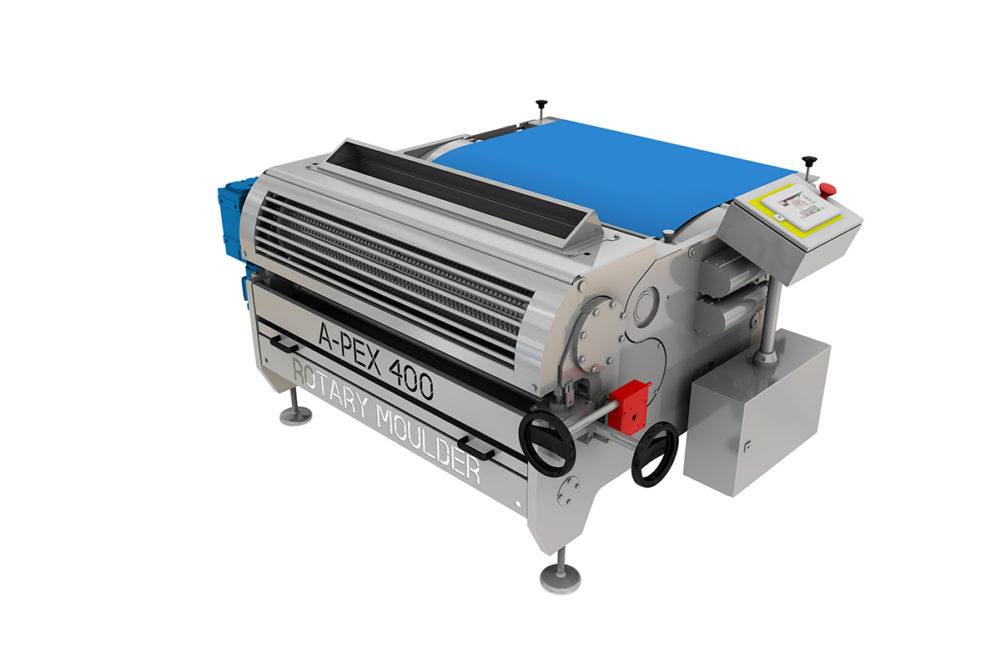As consumers flock to value-added foods like healthier cookies packed with protein and fiber, companies are stepping up and providing a host of new products that fill those needs.
“There are a lot of people getting into protein-type cookies, an awful lot of people,” said Jim Fontaine, bakery field sales manager for Reiser. “We are seeing more and more protein-based cookies.”
And as bakeries turn out these better-for-you (BFY) baked foods, they must also find ways to meet the challenge of creating these products.
“The niche products are definitely spreading far and wide,” said Kevin Knott, technical sales manager, Bühler Inc. “And that’s where a lot of innovation and alternate materials, better-for-you snacks and protein bars are definitely a big trend, which stresses the equipment.”
Cookie batters that have less sugar and more protein and fiber are less pliable, which means they can be difficult for cookie processing machinery to handle, whether they are wirecut, rotary moulded or deposited.
“Products such as these tend to be generally stiffer, firmer and more inflexible and as such flow less easily, which can cause equipment issues in automatically handling and machining the products,” said Andy Green, technical development manager, Spooner Vicars, a Middleby Bakery company. “This induces greater loads on the equipment, requiring more robust designs and construction.”
The longer the doughs sit after mixing, the harder they become. As proteins develop, soft doughs turn tough in a short time frame, explained Sam Pallottini, director of cookie, cracker and pet food sales at Reading Bakery Systems.
“High-protein formulations tend to have a short stable mixing period,” he said. “As the formulation sets, the product can become stiffer, making it challenging to feed it into the forming machines. It is important to understand these high-torque requirements and size the feed equipment accordingly.”
Most BFY doughs are made in batches, and Mr. Pallottini recommends running two to two-and-a-half batches per hour, which will ensure consistency in the product as it goes through the forming equipment and oven.
[Related reading: BFY cookie dough create not-so-sticky situations]
“Continuous mixing would be a better solution for this type of dough,” he said. “Continuous mixing uses the most accurate feeding technology available. All metering and mixing procedures are monitored and initiated by the control system so the operator is always able to confirm and modify as needed.”
Formulations with BFY doughs typically have more expensive ingredients, which increases the pressure for the process to run smoothly.
“The cost to throw away a batch is not viable; thus if something goes wrong, the time and effort needed to push these bad batches through can cause issues in other areas of the system,” Mr. Pallottini said. “Any delays or errors can be quite costly for an organization.”
One particular difficulty involves icebox cookies, which bring together two or more doughs to create a checkerboard pattern or another design. They can be tricky because the different doughs may not have the same consistency. One may be stickier while the other is drier, which makes it harder for them to stay together.
“When bakers are looking to do a mosaic wirecut or ultrasonic sliced cookie, they would want to have those two cookie doughs as close in texture and stickiness to work,” said John Giacoio, vice president of sales, Rheon USA. “Because it’s going through different chambers of the machine, and they come back together in that design, and they need to stick to each other.”
Denser doughs can be especially challenging when making rotary moulded cookies, which may require adjustments to die moulds.
“Our die engineers take this into consideration and will design the die cavity with angles and shapes to accommodate these dense doughs,” said Mark Glover, product manager, baked products and extrusion, Baker Perkins. “We can also supply a variety of coatings and die inserts for difficult-to-remove products.”
Of course, it is always helpful to test BFY recipes to see what to expect before running them through processing equipment.
“Having an innovation center where we can test customers’ recipes and/or help them identify the system requirements is most useful,” Mr. Glover said.
This article is an excerpt from the August 2021 issue of Baking & Snack. To read the entire feature on Cookies, click here.





